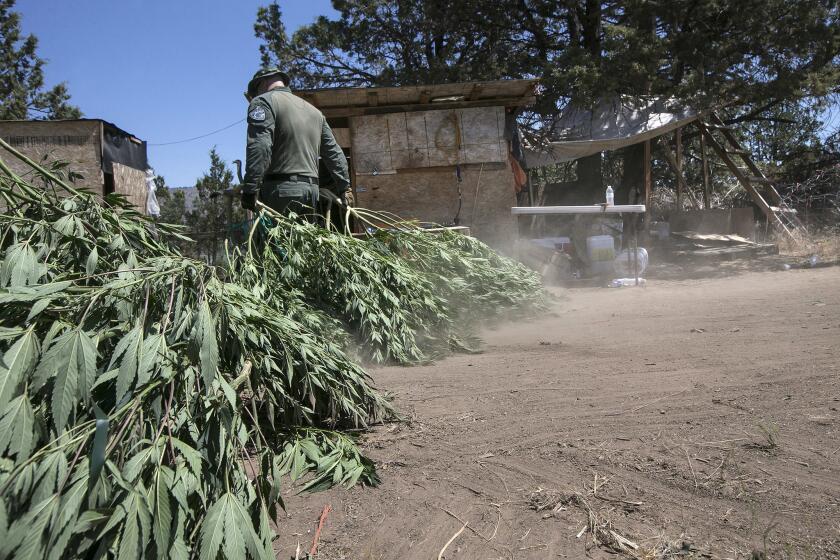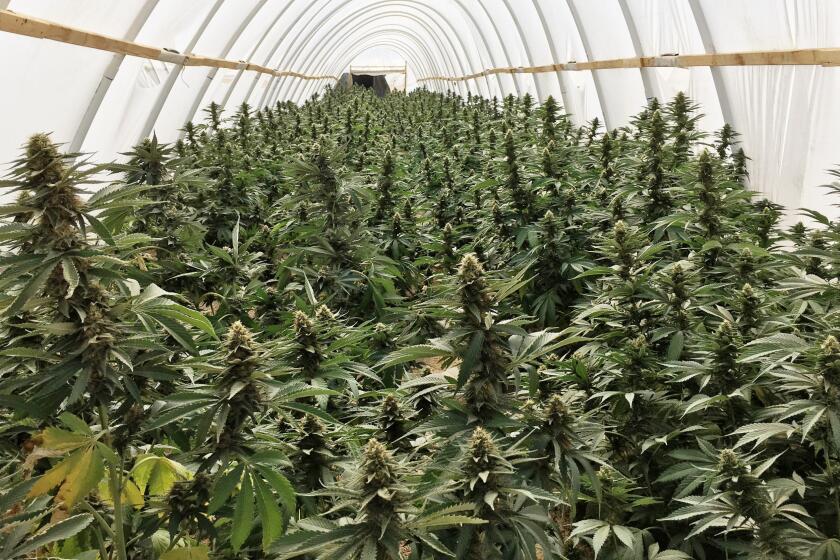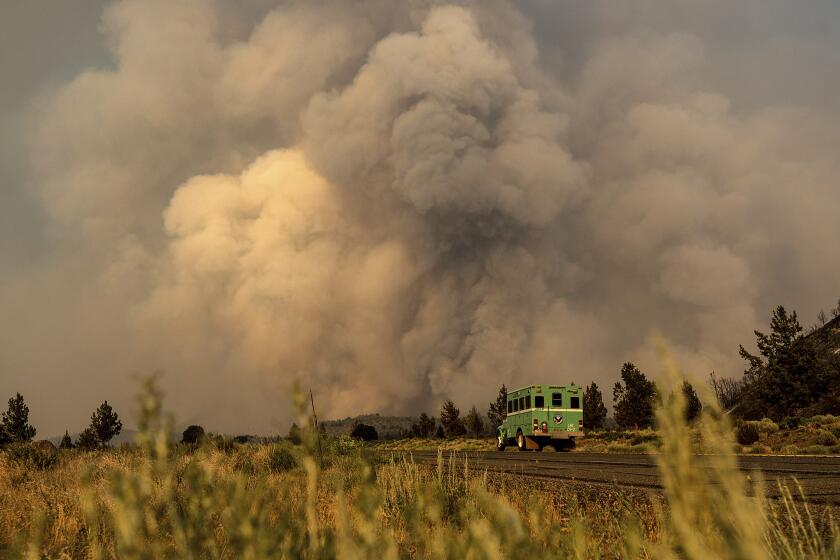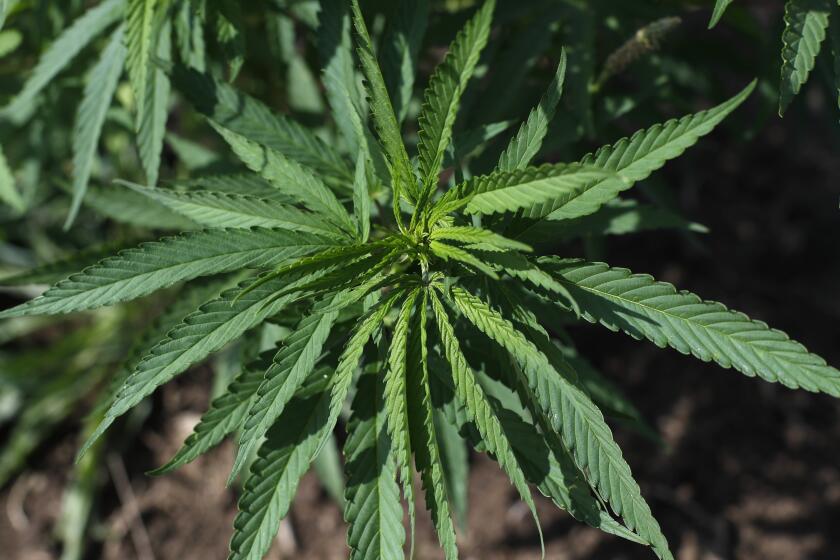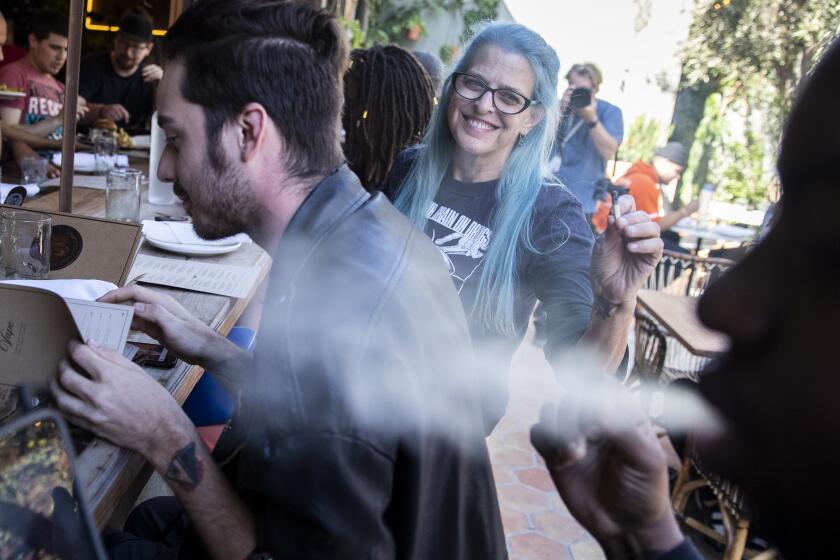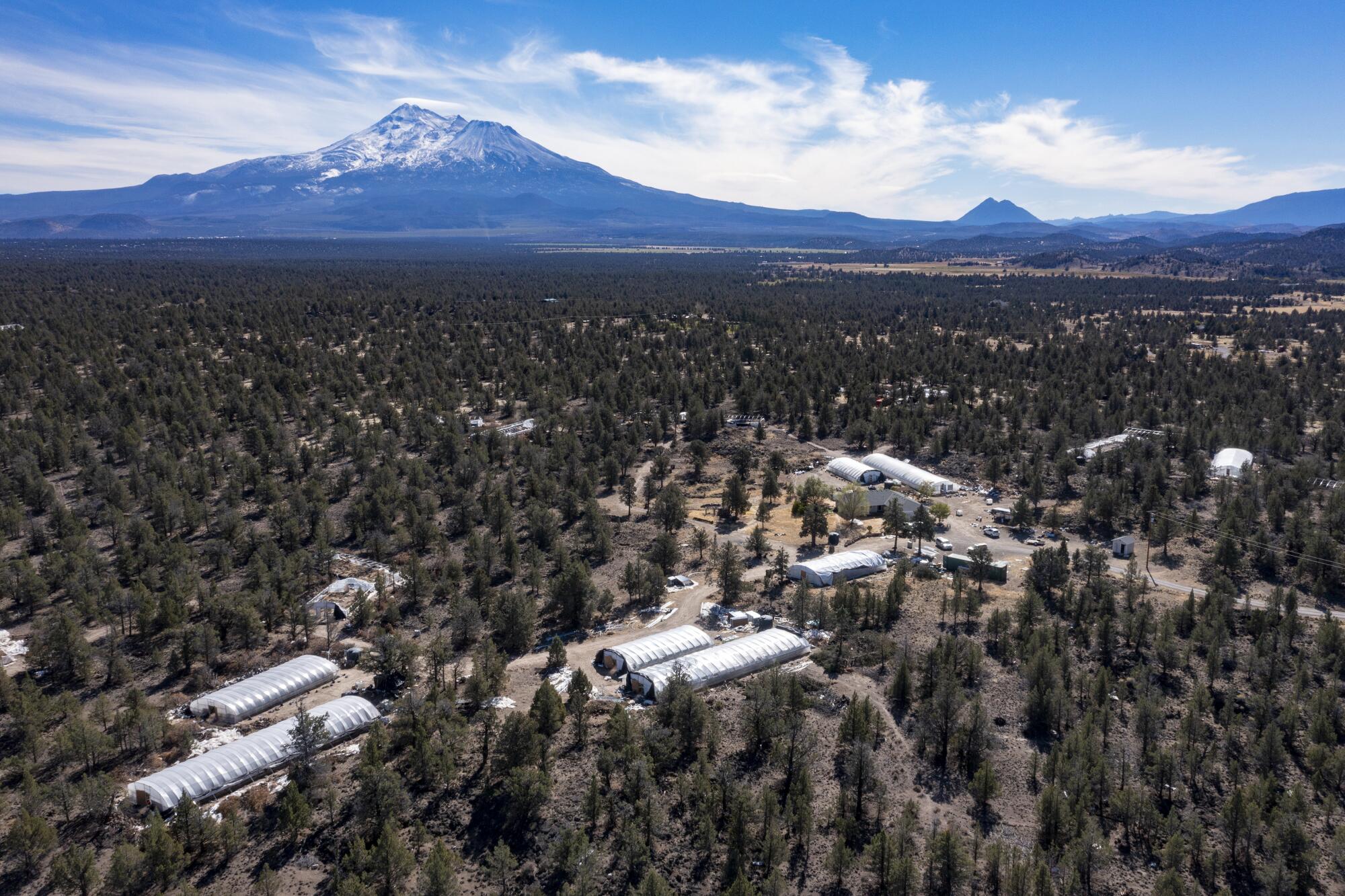
Even by the standards of drought-stricken California, conditions in Mount Shasta Vista had become desperate.
As the state suffered its hottest summer on record, farmers watched with growing apprehension as their chickens and ducks died from dehydration and their vegetables withered without irrigation. With precious little water just to drink, families bathed only once a week. Others considered abandoning their property entirely.
But, unlike in the rest of the American West, the extreme water scarcity plaguing this tiny corner of far Northern California was not the result of dwindling snowpack or plummeting reservoir levels. Instead, it was due to a concerted government effort to “choke out” a problem that had vexed Siskiyou County officials for years: the illicit, large-scale cultivation of marijuana in a single subdivision that is largely Asian.
In the spring of this year, county supervisors effectively outlawed the transportation of water into a rural tract that had become known for its prolific cultivation of pot, squalid living conditions and large population of Hmong farmers.
The measure was just the latest attempt by local officials to shut down the pot farms, which authorities blamed for a spike in violent crime and environmental degradation.
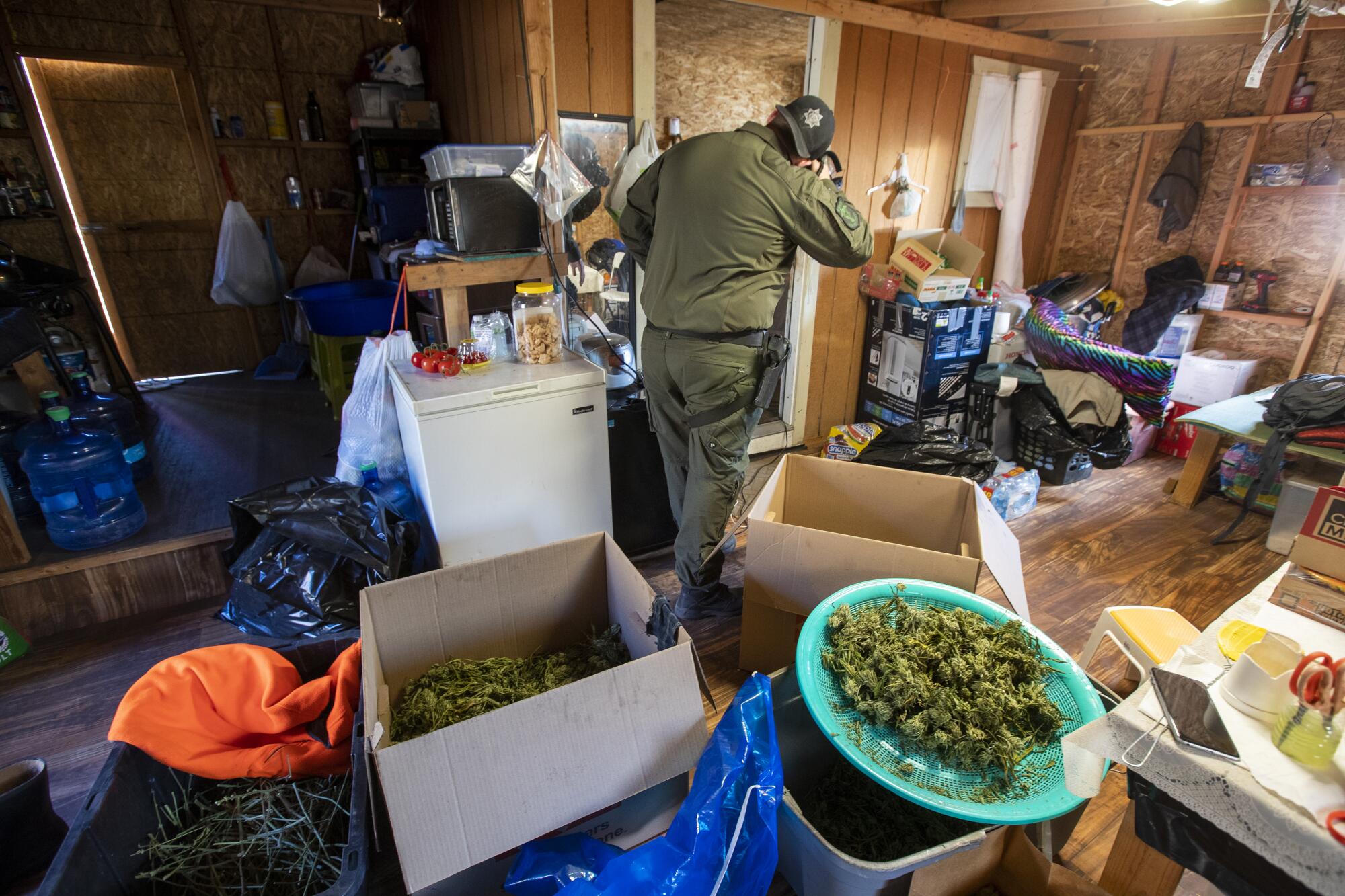
This time however, as the Lava fire tore through the countryside, Siskiyou County’s crackdown would erupt in violence and draw national attention to a bitter conflict involving race, water and the legalization of marijuana. It would also cause a federal court judge to openly question the county’s motives for implementing such harsh measures, coming as they were at a time of severe drought, record heat and extreme risk of wildfires.
“The dehydration and de facto expulsion of a disfavored minority community cannot be the price paid in an effort to stop illegal cannabis cultivation and any attendant harms,” wrote Judge Kimberly J. Mueller of the Eastern District of California.
::
Carved out of Siskiyou County’s arid, lava-formed slopes in the mid-1960s, the Mount Shasta Vista subdivision offered little in the way of civilized comforts. Among other hardships, volcanic rock complicated the drilling of water wells and the installation of septic tanks. The maze of dusty private roads saw no government upkeep or improvement.
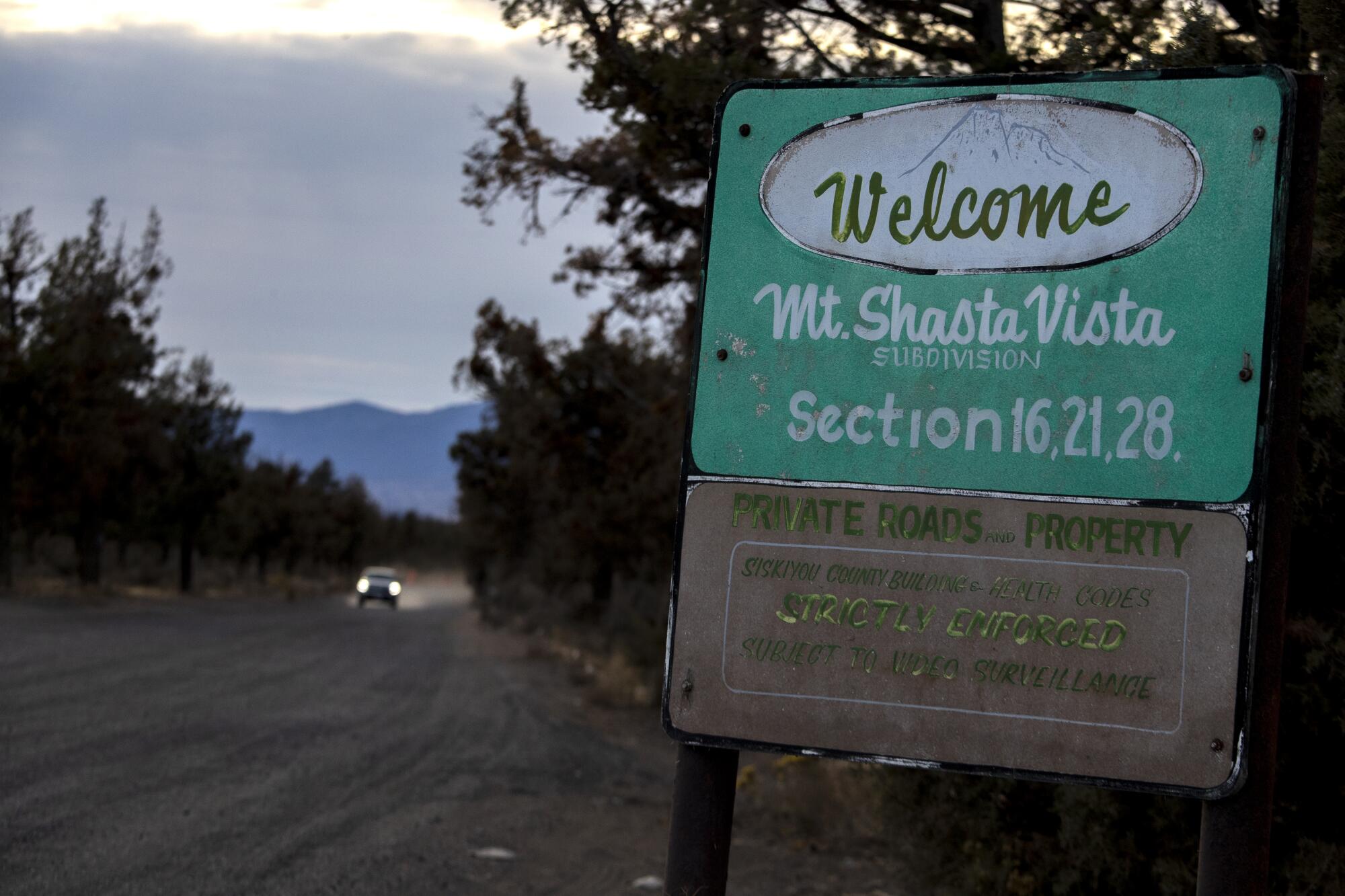
For years, the subdivision was populated mostly by white retirees, squatters and a few methamphetamine users and makers, according to Margiana Petersen-Rockney, a UC Berkeley rural sociologist who has studied cannabis cultivation in Siskiyou County.
But in 2015, Hmong growers began moving into the subdivision from Minneapolis, Milwaukee and Fresno — areas where the U.S. State Department resettled Hmong refugees whose collaboration with U.S. forces in the Vietnam War had marked them for persecution by the communists. This was also around the time that California voters passed Proposition 64, which legalized the recreational use of cannabis and reduced the penalty for growing and selling it from a felony to a misdemeanor.
Drawn by plots of juniper- and sagebrush-studded land that could be purchased for as little as $2,500 for several acres, residents often bypassed permitting regulations to establish farms with austere living quarters.
“In some cases, the people try to make an honest living. In other cases, we settle here to get away from cities,” said Bee Xiong, 59, who retired early and relocated his family of six from Wisconsin to start anew on 40 acres.
Today, some 1,000 Hmong live in the subdivision, but county officials complain that only 80 to 84 of the numerous structures there were erected with permits.
“There’s often no septic system on the parcels, so usually a hole is dug, and raw sewage is being pumped into the ground out of a travel trailer or unpermitted structure,” said Siskiyou County Sheriff Jeremiah LaRue. Authorities also fear that pesticides, fertilizers and solvents from the farms could make their way into the groundwater supply, he said.
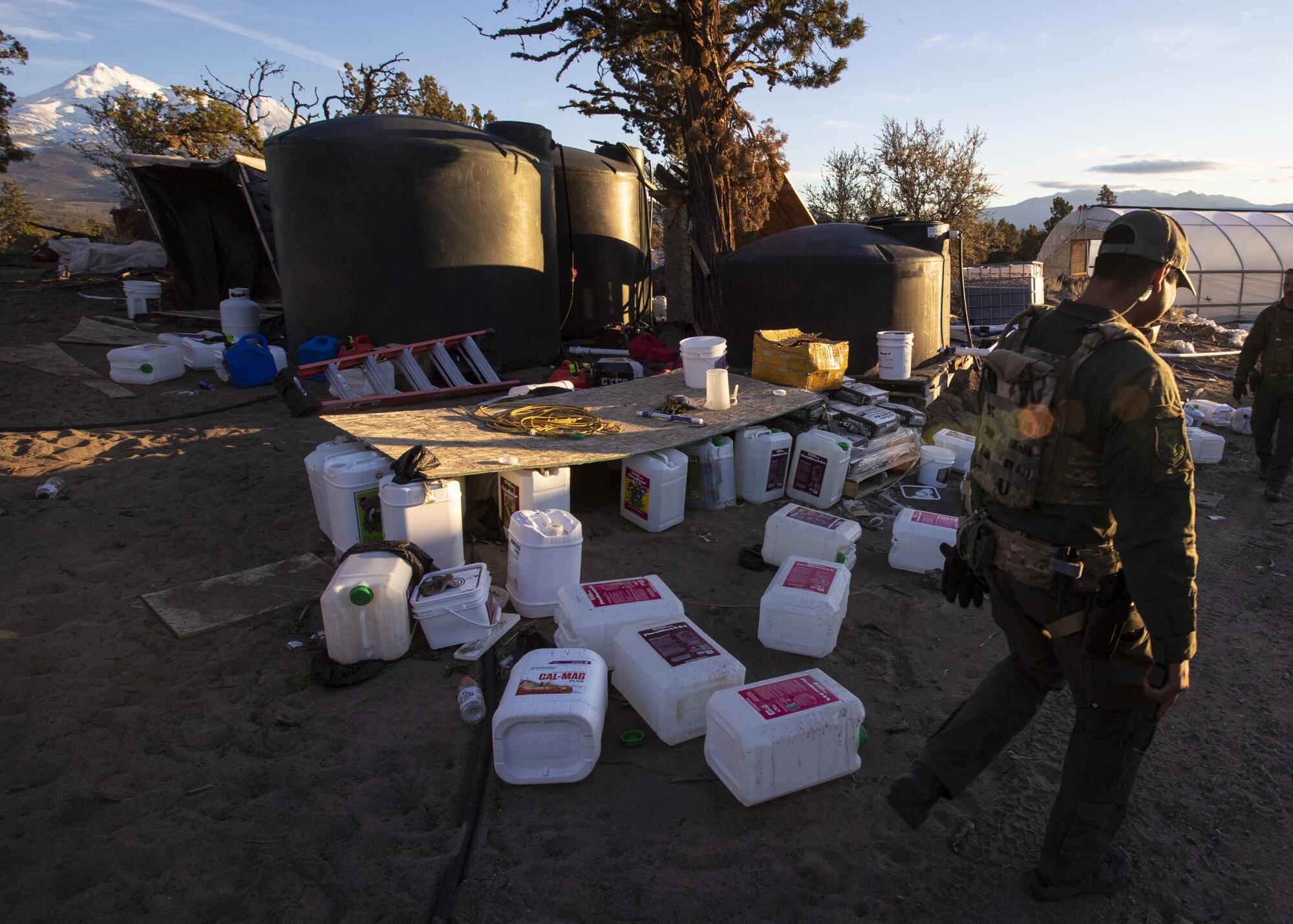
County authorities have described the subdivision plots as large-scale commercial cannabis operations and say they’ve fostered lawlessness. In the last few years, the Sheriff’s Office has responded to reports of armed robbery, assault and murder, LaRue said. In one recent week, six people were tied up and robbed by gunmen armed with AK-47s, he said.
It took a single growing season for county supervisors to put strict limits on cultivation, including an outright ban on outdoor growing.
“There have been white people growing cannabis in the county for a long time, at least back to the ’60s, without anybody batting an eye and with little mention in county records,” Petersen-Rockney said. “It just seems very coincidental that this Hmong community comes into the area, and the county is suddenly obsessed with cannabis.”
Subscribers get early access to this story
We’re offering L.A. Times subscribers first access to our best journalism. Thank you for your support.
By 2016, the Sheriff’s Office had declared criminal marijuana cultivation public enemy No. 1. The following year, the county declared a local state of emergency over the issue and has renewed it each year since.
In last year’s declaration, as the state slipped into drought, the Board of Supervisors noted the water crisis, saying that cannabis cultivation was depleting surface and groundwater resources.
Then wells started going dry. Residents in areas like Big Springs reported turning on their faucets and having nothing come out.
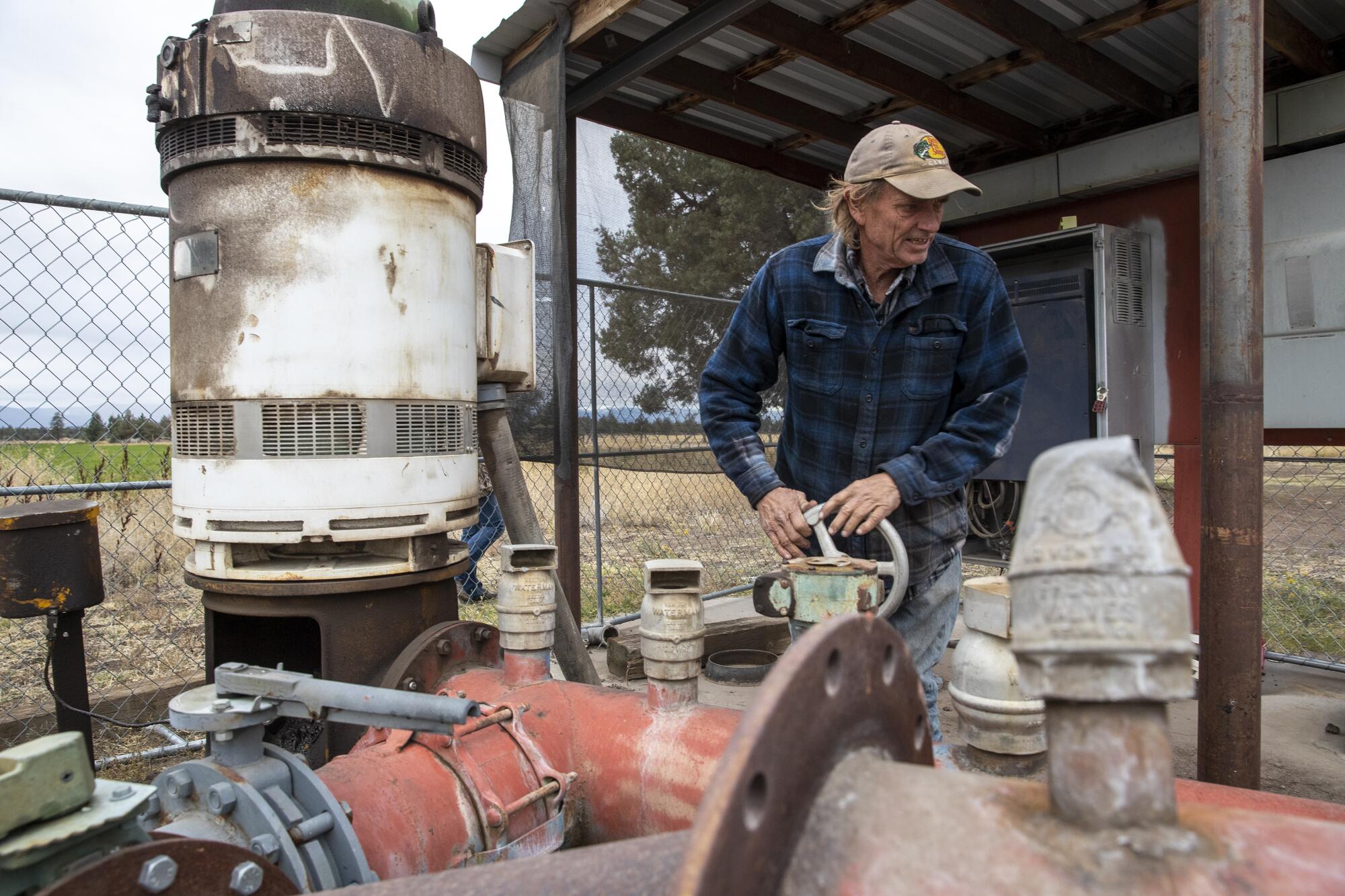
Some blamed the cannabis grows. They also blamed local farmers like Stephen Griset who were selling water from their own wells to the subdivision. A line of water trucks waiting to be filled could often be seen at the edge of Griset’s property down the road from Mount Shasta Vista.
“Our wells are 265 feet, and some of these people have 40-foot and 50-foot wells,” Griset said. “But when their wells went dry, they looked over at the water trucks and said, ‘Wait a minute, we don’t have water, but they get water.’ So they started to get resentful.”
Last August, the county passed the first of several urgency ordinances aimed at cracking down on water use, declaring it illegal to extract groundwater for cultivating cannabis and prohibiting people from allowing it to occur on their properties.
The next month, the county sued Griset and another farmer for allegedly continuing to supply water to the cannabis farms.
Illegal marijuana grows have exploded across the California desert, along with forced labor, ecological destruction and fear
Matters escalated in May, when the county passed ordinances requiring permits to haul groundwater off-parcel for any purpose and to operate water trucks designed to carry 100 gallons or more on the roads leading to Mount Shasta Vista.
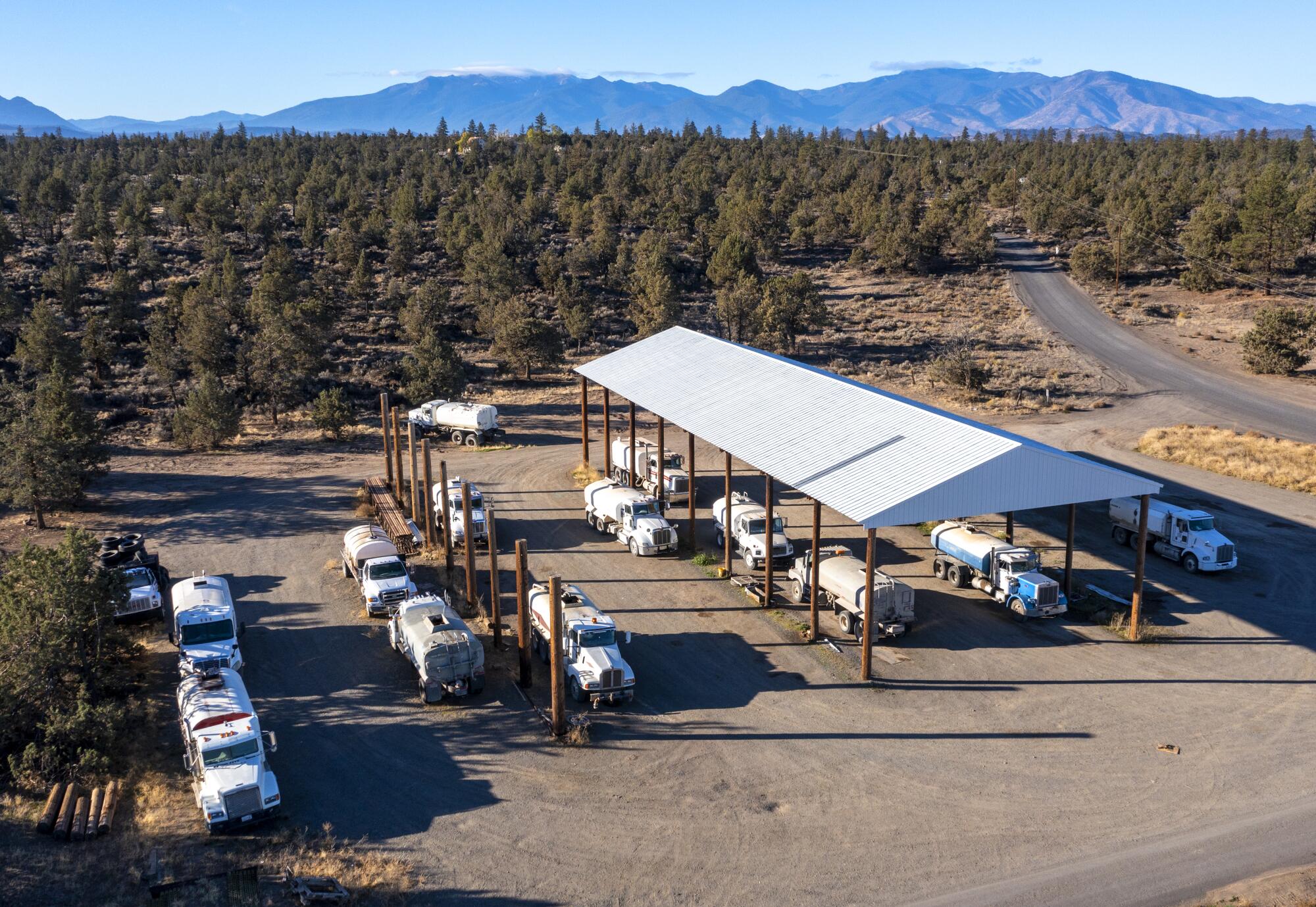
For some in the Hmong community, the county’s water crackdown revived memories of the hardships they suffered while hiding from communist forces in the jungles of Southeast Asia.
“My current living situation is much like living in the jungles of Laos,” wrote Der Lee, 56, in a court filing. “However, in the jungle, I had plenty of water.”
::
Hmong residents say the water dispute has emboldened some racist neighbors and officials who have become open in their hatred, raising fears of vigilantism. They tell of being heckled at community gatherings, harassed in online forums and repeatedly pulled over by law enforcement while driving.
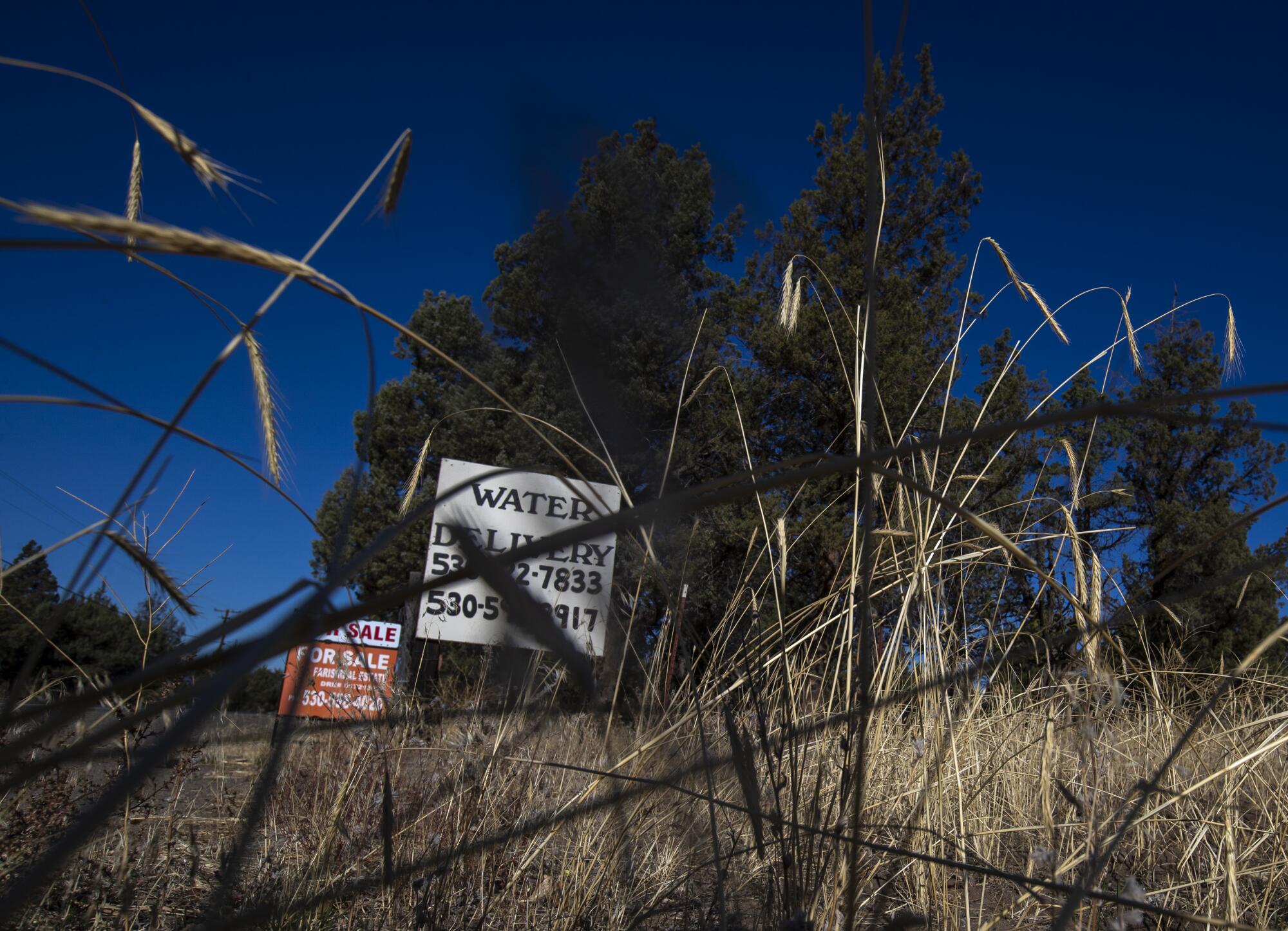
Those concerns led Lee and others to file a federal civil rights lawsuit that accuses the county of violating the 14th Amendment of the U.S. Constitution, which guarantees citizens equal protection of law.
Mueller, the federal judge, on Sept. 3 suspended enforcement of the two May ordinances until the lawsuit is resolved, saying the plaintiffs had raised serious questions about the county’s motives.
“It is difficult to square the County’s claims of concern about the health and well-being of people in Shasta Vista with its decision to cut off their water supply completely,” she wrote. “This evidence supports the plaintiffs’ claims that the County intends its permitting ordinances to have the effect of forcing people in Shasta Vista out of their homes.”
Residents and supporters, who had mobilized for a series of demonstrations against the ordinances, greeted the news with cautious optimism.
“It’s about time,” said Tong Xiong, who organized a protest that attracted more than 700 supporters to Yreka this summer.
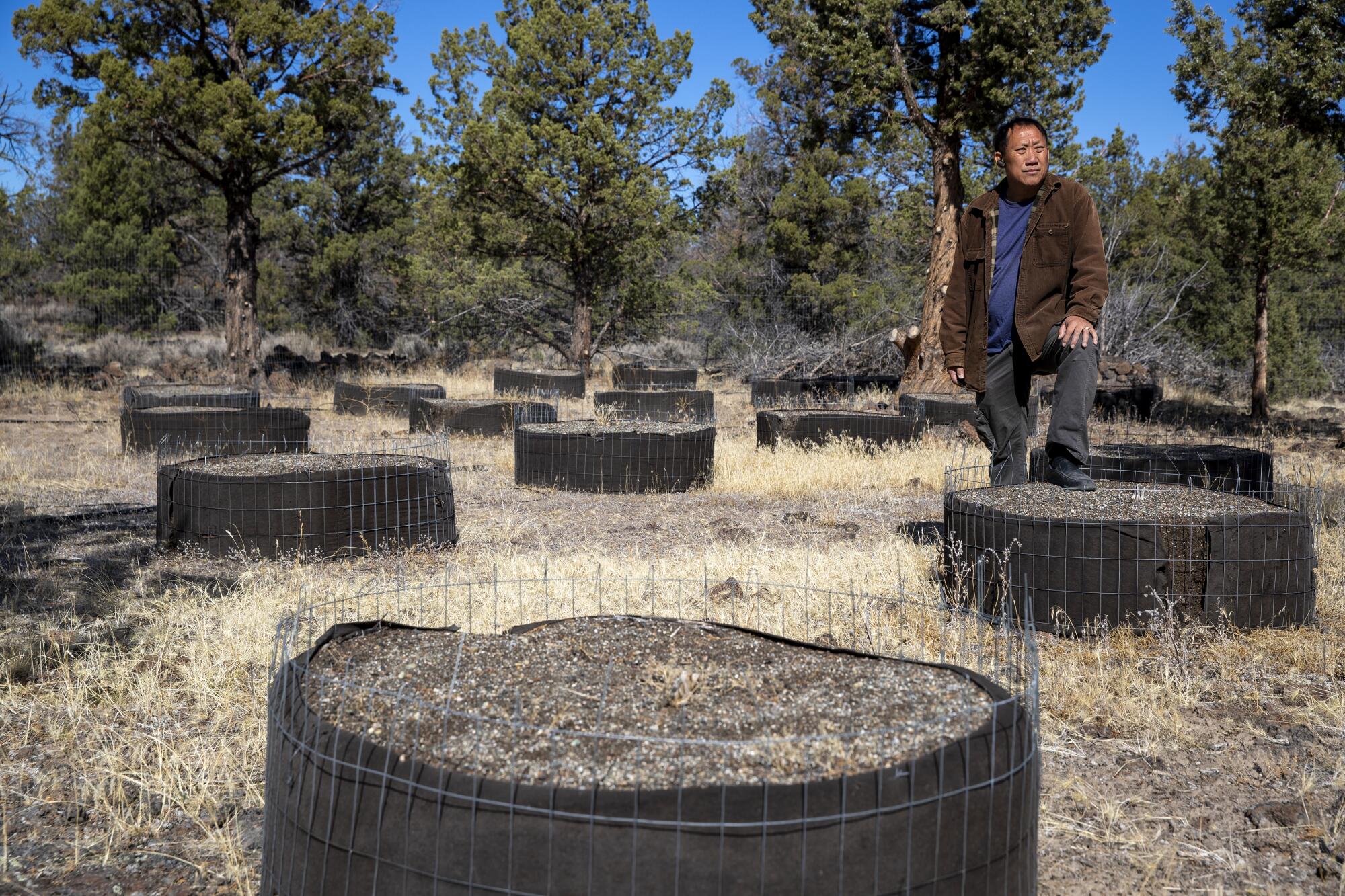
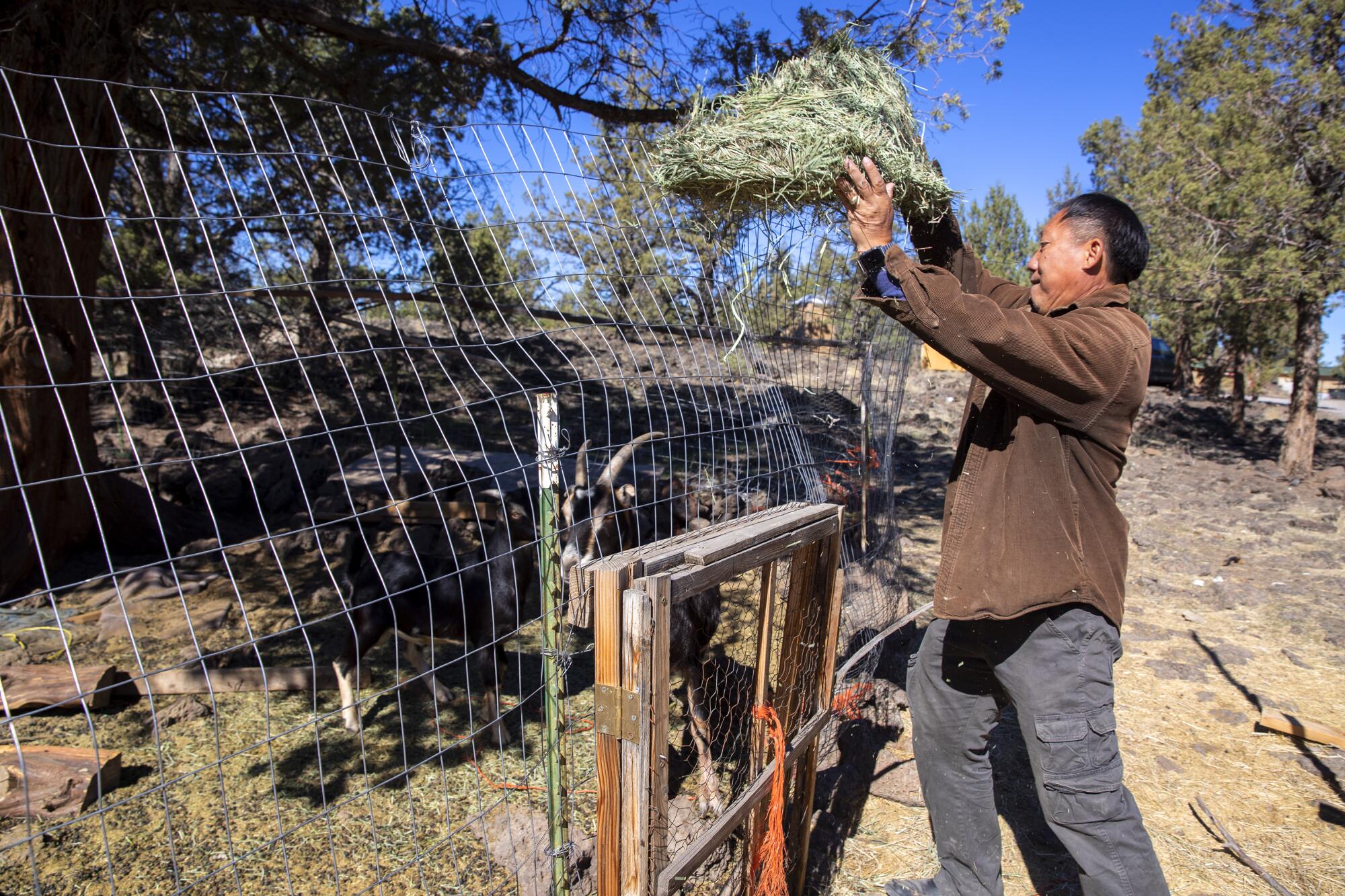
Bee Xiong, who is not participating in the lawsuit, and others say they have been called “cartel” members or “Asian mafia” by residents and police.
“They label us to get us in trouble,” Bee Xiong said.
Others say LaRue has inflamed tensions with controversial posts on the Sheriff’s Office Facebook page, including one asking people to help raze cannabis farms by lending the department heavy equipment and volunteering to operate it, and another suggesting that local businesses could get in trouble for supplying goods and services to cannabis farmers.
The Facebook page has also shared multiple photos of trash at grow sites, drawing comments like “Hope ya burned it down, growers and all,” “Wipe them out” and “Maybe come winter, they need to be burned out of business??????”
::
So maybe it’s no surprise that when the lightning-sparked Lava fire barreled toward Mount Shasta Vista in late June, one persistent rumor was that the sheriff’s office had started it.
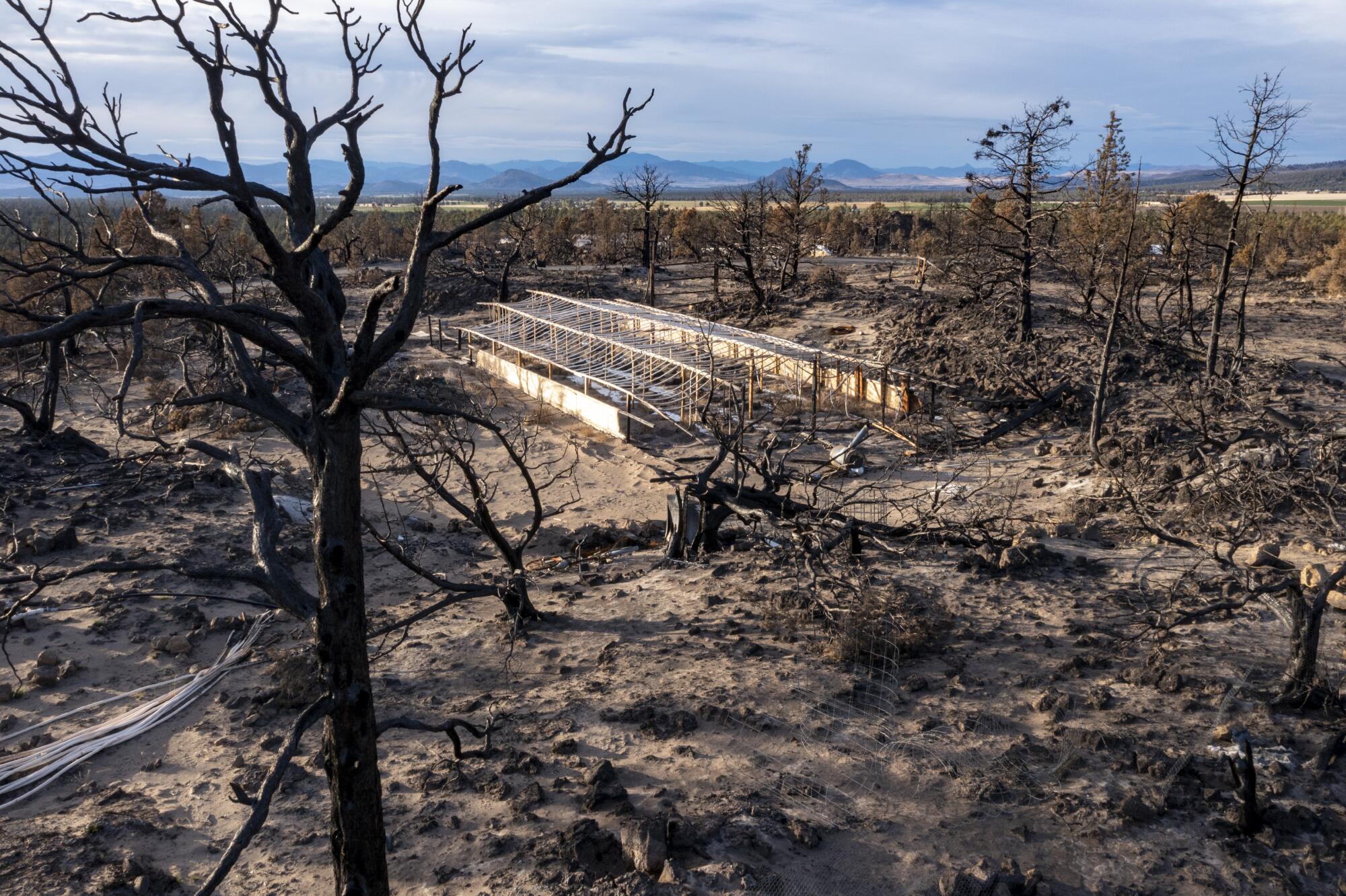
When officials ordered the subdivision to evacuate, emotions flared. Some residents stayed behind to defend their property, but without water, their informal fire brigade was forced to douse spot fires with buckets and sand. There were also reports of hostility by subdivision residents toward firefighters and law enforcement, throwing rocks or barricading roads, according to LaRue. Fourteen people were arrested for entering the evacuation zone and refusing to leave, he said.
‘This fire stayed very small,’ said Adrienne Freeman, spokeswoman for the Shasta-Trinity National Forest about the Lava fire. ‘Until it didn’t.’
It was amid this confusion that Soobleej Kaub Hawj, 35, encountered a checkpoint staged by police and firefighters just outside Mount Shasta Vista. When officers ordered Hawj and other drivers to turn left, away from the fire, Hawj tried to turn right and pointed a handgun at the officers, authorities say. The officers opened fire on Hawj, killing him in the seat of his pickup truck. His wife and three children were in a car behind him.
Authorities believe Hawj fired his weapon once, LaRue said, but it was not clear whether he may have shot first. Members of the Hmong community say they have eyewitnesses willing to confirm that law enforcement tangled with and “targeted the victim first,” Tong Xiong said.
The incident unfolded so quickly that officers who were equipped with body cameras did not activate them, Dist. Atty. Kirk Andrus said, adding that there is dash-cam video that was shot from a distance, as well as footage from a body camera that was activated after the shooting and shows its aftermath.
“It was a routine checkpoint that became not routine instantaneously,” he said.
Images of Hawj’s bullet-riddled truck that circulated via social media galvanized the Hmong community and advocates, sparking more protests.
“That’s the last straw in the mistreatment we were experiencing from the county,” Tong Xiong said. “If we didn’t stand up for our constitutional rights, you know, we will be stopped all the time, and there will be another Hmong brother or sister hurt.”
::
The shooting brought national attention to Siskiyou County, putting local officials on the defensive as their offices were flooded with petitions and calls demanding justice, amplified by the ACLU, Asian Law Caucus, Southeast Asia Resource Action Center and other organizations.
It also raised questions about the effects on local commerce if officials are successful at driving out cannabis farmers, who by some estimates outnumber other farmers and ranchers in Siskiyou County by 2 to 1.
Supervisor Ed Valenzuela, the only one of the board’s five members who responded to a message from The Times, credited the influx of Hmong residents with helping the local economy. Big Springs, which has a gas station and grocery store where you were once lucky to find a soda and a candy bar, is now a top 10 producer of sales tax revenue in Siskiyou County, he said.
Valenzuela said he has been inundated with phone calls and emails from Hmong people and advocates, many from out of the area, decrying the county’s actions. He pointed out that supervisors in Siskiyou County don’t have an office or staff.
“We’re a poor, rural county trying to do the best we can,” he said. “We’re reacting to an issue.”
The issue isn’t Hmong people, he insisted, but illegal cannabis grows.
“Quite honestly, I wish they were growing tomatoes,” he said. “That would make life a lot simpler.”
Times staff writer Paige St. John contributed to this report.
More to Read
Sign up for Essential California
The most important California stories and recommendations in your inbox every morning.
You may occasionally receive promotional content from the Los Angeles Times.
